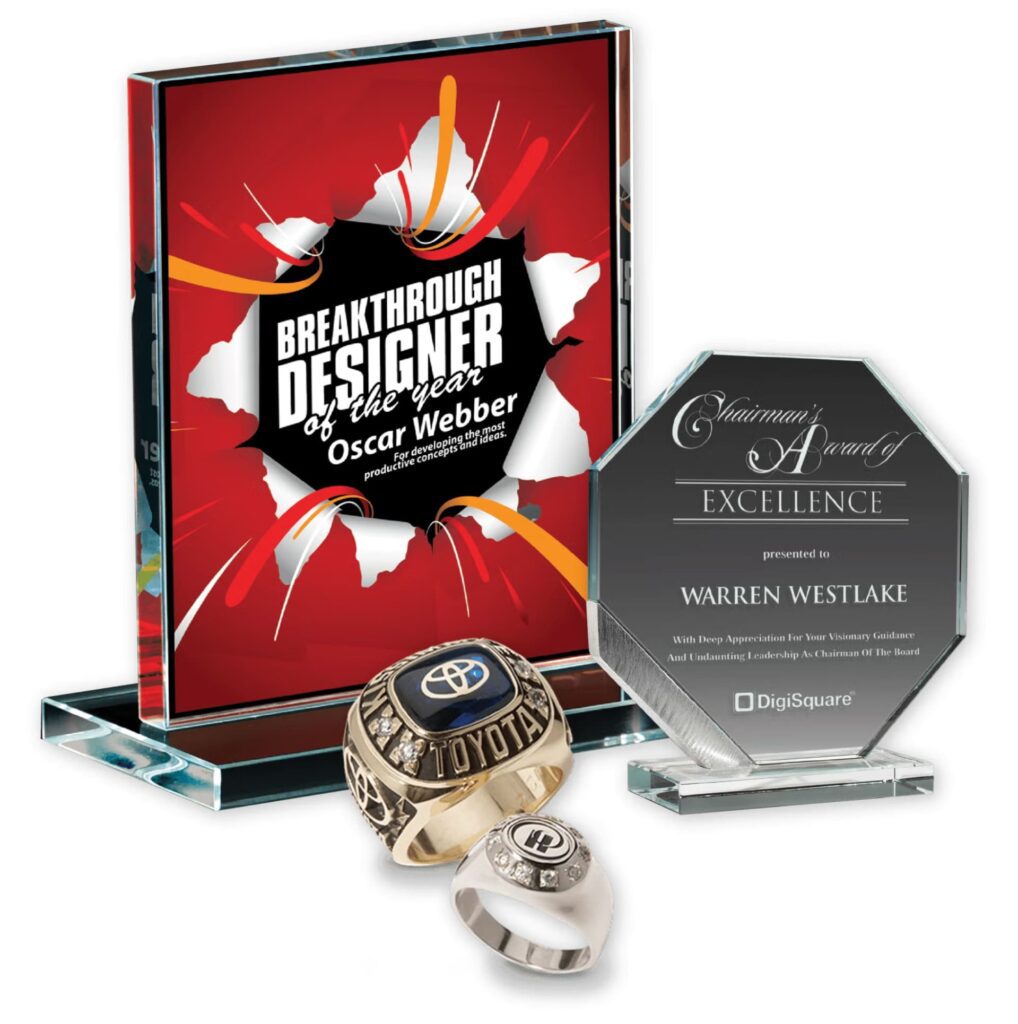June 16, 2025

From custom awards to cash bonuses and self-care gifts, employee rewards can fuel strategic goals. But here’s the catch: rewards alone won’t cut it.
They’re great for showing appreciation, but if you want to shape company culture or reduce turnover, you need a tailored employee engagement program. Rewards help drive actions and outcomes, but they’re just one piece—the incentives—in a system built to achieve broader objectives.
Most businesses that come to us about employee rewards are trying to solve specific problems—like motivating teams or reducing turnover—but they’re often unsure how to design programs that truly tackle those challenges or know whether they’re working.
In this guide, we’ll cover:
- 5 types of employee rewards—and when to use each
- How employee engagement programs use rewards to drive strategic business goals
- Tools to build scalable, goal-driven employee engagement and rewards programs
Terryberry’s rewards platform offers unbeatable access to employee rewards via Amazon Business. You can make redemption effortless, offer Prime-like delivery, and never miss key achievements or milestones. With Terryberry, you can design and launch recognition, wellness, and employee listening programs tailored to strategic objectives.
5 Types of Employee Rewards
The right employee reward depends on the occasion, your goals, and the recipient. Annual bonuses work for compensation, but aligning rewards with goals—like shaping culture and reinforcing company values—means looking beyond standard cash rewards.
Here are four additional types of employee rewards worth considering:
1. Custom Awards
Data suggests that using custom, tangible awards as incentives drives a 12% increase in employee engagement on average. They’re popular for recognizing milestones like years of service or as incentives to reward top sales performers.
Since 1918, Terryberry has proudly manufactured heritage awards, including custom jewelry, plaques, trophies, and luxury items for our customers.
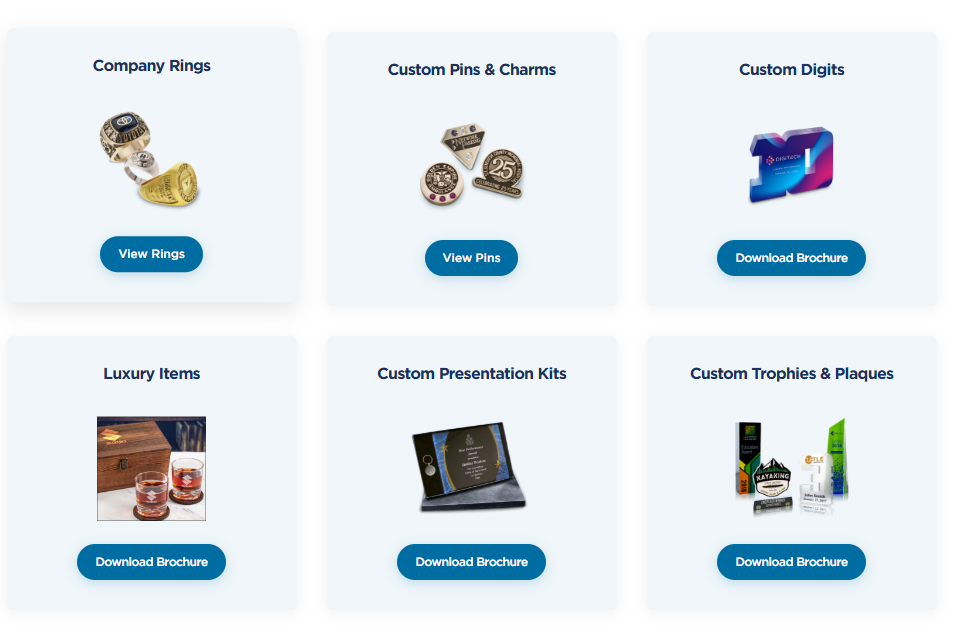
2. Experiential Rewards
Rewards don’t have to be tangible gifts. You can let employees choose from various travel and experience options like hotel stays, airline miles, movie or theme park tickets, or a special family dinner. A points-based rewards platform lets them decide when to redeem their points, giving them flexibility to plan these experiences on their own schedule.
3. Personalized Gifts
You can make your gifts count by tailoring them to the occasion or the recipient’s passions. From engraved pens and branded notepads to custom apparel, cozy blankets, and sleek stainless steel bottles, personalized gifts leave a lasting impression.
Celebrating the holidays? You can go festive with themed gift baskets and seasonal goodies that show you’ve gone the extra mile.
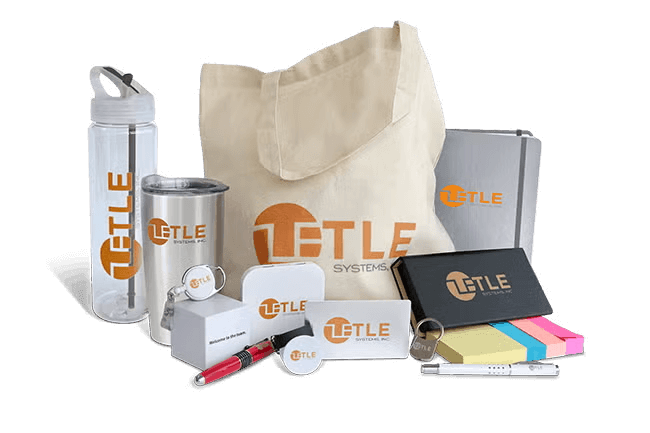
4. Wellness and Self-Care Rewards
Wellbeing-focused rewards make thoughtful gifts or fit perfectly into ongoing wellness programs. Fitness trackers, for example, keep employees motivated by tracking steps, sleep, and even heart health with EKG features.

Developing a Rewards Program: Drive Business Goals with Employee Rewards
If you’re looking at employee rewards for occasional needs—like handing out holiday gifts or an employee of the month program—a basic, informal setup might do the trick.
But what if you want to be more methodological about how employees are rewarded?
For example, what if you want to recognize top performers based on real performance metrics? Or motivate employees who embody your company’s core values or reach their fitness goals?
Here’s what you need:
- A rewards platform to automate employee rewards.
- An employee engagement program with specific objectives, like instilling core values or improving retention.
- A way to measure impact and ROI—while showing leadership how your rewards and engagement programs are paying off.
1. Creating an Automated, Personalized Employee Rewards Experience
Rewards platforms are necessary to scale rewards programs. As your program grows, the admin work piles up. You’ve got to track nominations and dates, place multiple orders, and manage budgets. Choosing the right rewards for each person and occasion becomes tedious.
A rewards platform:
Automates Administrative Tasks
Everything from nominations to sending reminders and placing orders is managed in a single, centralized platform. Your HR team won’t need to remind managers about upcoming milestones or keep recipients posted with shipping updates—the platform takes care of it for you.
Standardizes Reward Timing & Criteria
You can configure a rewards platform to ensure people are rewarded properly, at the right time. For example, you can:
- Program milestones, such as for service by specifying rewards for different years. Maybe someone with one year of service gets a custom pendant, while people with five years get an engraved trophy and cash rewards.
- Implement a points-based system where employees earn points they can save and redeem for tangible or experiential rewards. A rewards platform lets you build a catalogue with categories like travel, experiences, electronics, and more. You control when and how points accumulate. For example, managers might get a fixed monthly quota to award team members based on performance.
Once your rewards platform is set up, it runs quietly in the background. This frees program leaders to focus on driving strategy, gathering feedback, and measuring impact.
Give Employees Rewards They’ll Love with Terryberry’s Rewards Platform
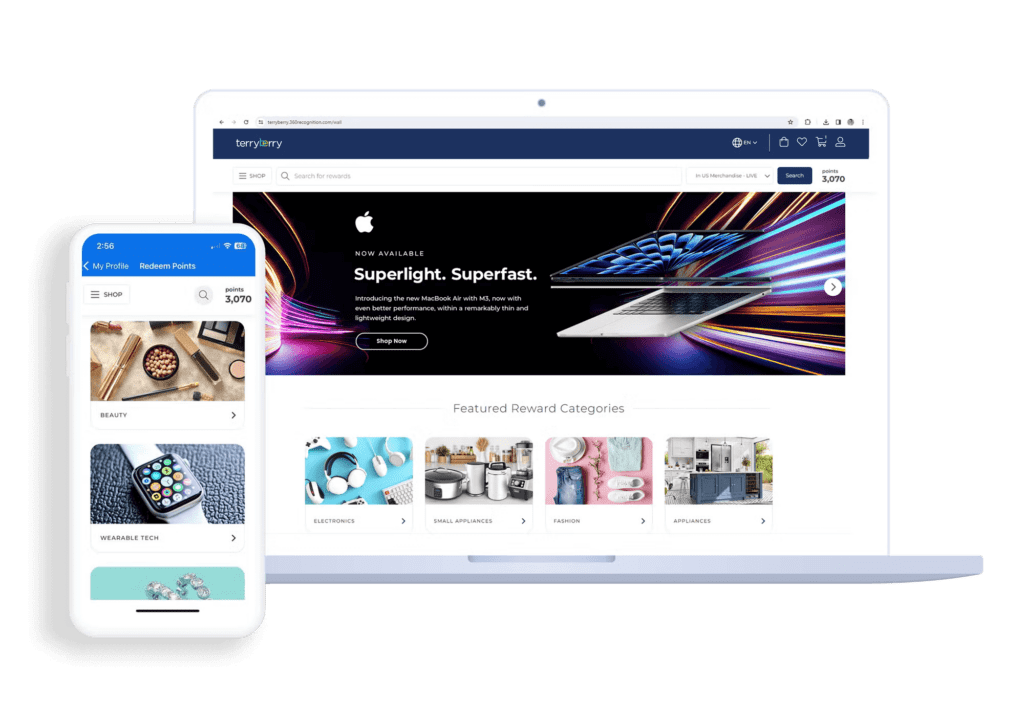
Terryberry’s rewards platform offers the largest selection on the market. Build a custom, in-platform shopping portal with our Premium Rewards catalog—featuring top-brand merchandise, once-in-a-lifetime experiences, travel and lifestyle rewards, and charitable donations.
Based in the U.S.? Enjoy fast, Prime-like delivery with zero-markup via Amazon Business.
Shipping internationally? Terryberry’s international warehouses and 100+ local fulfillment partners have you covered.
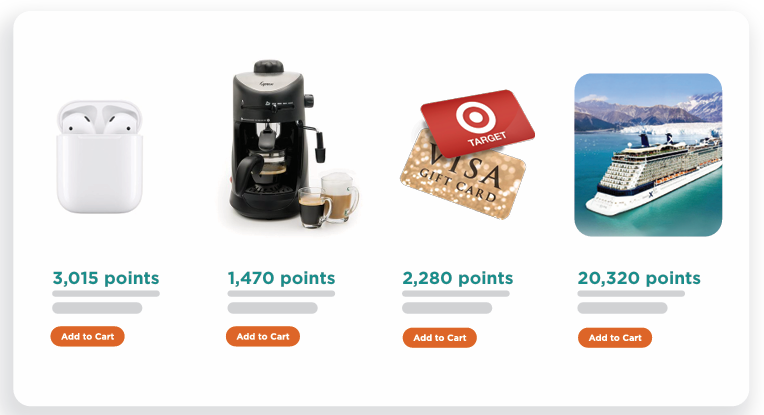
You can configure Terryberry’s rewards platform using points, levels, or a combination of both. Assign specific rewards based on years of service, or award points employees can redeem through your custom shopping portal.
2. Drive Company Values with Employee Rewards & Recognition
Once your rewards system is configured, it sets the stage for a meaningful employee engagement program. The next step is to add context to the rewards.
Take service awards, for example—they celebrate loyalty and long-term commitment. But what about an employee of the month program? One person gets rewarded each month—but who? If you’re recognizing the “top performer,” you’ll need to define exactly what that means.
Start by aligning with your company’s strategic goals. Many growing businesses aim to shape culture by instilling core values like “being kind” or “always being candid.” But without a clear system to reinforce those values, culture tends to fade as companies grow.
Companies we’ve worked with solved this by building systems that motivate employees to demonstrate the company’s core values.
For example, employee of the month could go to the person who best embodies those values. Recognize them with a custom award—like a pendant or plaque. Or reward everyday moments with points when someone models a value.
There’s no single “best” way to design an employee engagement program. Businesses achieve similar goals through different approaches. We recommend a top-down framework where leaders actively recognize and reward employees, as well as peer-based programs where colleagues celebrate wins and nominate teammates.
With that in mind, here’s your toolbox for building engagement programs: employee recognition programs focus on rewards, and employee wellbeing programs boost wellness and team building.
Let’s start with recognition.
Launching Tailored Recognition Programs with Employee Recognition Software
Employee of the month, service awards, and performance bonuses are classic ways to recognize employees. And since recognition and rewards go hand-in-hand, most mainstream employee recognition software now comes with built-in rewards platforms.
You can use these platforms to build a recognition program that:
- Ties recognition to key objectives. Want to reinforce your company’s core values? Configure the program so managers select which value an employee demonstrated when giving recognition.
- Clarifies who can give recognition. Manager- and executive-led recognition isn’t your only option. Let peers recognize each other, define the criteria, and assign fixed points for each nomination.
- Creates memorable reward experiences. Offer milestone gifts (e.g., $50-level items for 3-year anniversaries), points-based catalogs, or a mix of both. You control the rules, the rewards, and the experience.
Our own recognition software—the Terryberry employee recognition platform—lets you develop highly tailored programs around your company’s needs, goals, and culture.
For example, Chelsea Groton Bank partnered with us to create a peer recognition program with multiple recognition levels and custom rewards.
We configured Terryberry to launch their “Acorn Rewards” program by:
- Creating custom nominations. Employees can recognize each other for demonstrating one of the company's core values, or going above and beyond in their work, with a custom “Purple Acorn Award”. We configured Terryberry’s nomination feature to let people select the relevant core value when recognizing a peer.
- Tailoring rewards experiences. Employees who collect 10 Purple Acorns receive a themed plush toy, the “Happy Squirrel,” which they can proudly display. For every 10 additional Acorns they collect, team members are awarded points they can redeem for luxury and lifestyle gifts in Terryberry’s rewards platform.
Chelsea Groton Bank has 200+ employees across 15 locations, making it tough to spread core values and connect with everyone. The Acorn Rewards program works because it empowers each person to own and drive recognition.
3. Growing Employee Wellbeing Programs with Rewards
Employee wellness is a broad term covering everything from step challenges and mental health days to connecting employees with specialists for support. Rewards are especially helpful in proactive employee wellness programs designed to build a system and culture that encourages wellness and prevents burnout.
These programs often include a mix of:
- Wellness and activity challenges. From step challenges to sleep tracking and other challenges that motivate employees to care for their mental and physical health.
- Training and seminars. Educational sessions that raise awareness and provide practical tips. Some companies invest in on-demand wellness content libraries or bring in experts for live training.
- Personalized wellbeing plans. Companies might partner with third parties to offer their employees tailored wellbeing plans for their emotional, mental, or physical health.
Many growing companies launch employee wellbeing programs with good intentions but struggle to keep teams motivated. Low participation in step challenges and spotty follow-through on wellbeing plans are common.
Rewards solve this by directly incentivizing and gamifying your program.
Set rewards for different participation tiers—whether that’s just for participating or hitting specific milestones (e.g., 10,000 steps/day)—and save the best rewards for top performers.
Tip: Boost engagement with wellness and self-care rewards like fitness trackers or spa day certificates for top performers.
Looking to support your workforce’s mental and physical wellbeing with a tailored wellness program? Launch activity challenges, access expert-led crafted content, and get personalized wellbeing plans with Terryberry’s employee wellness software.
4. Uncover Opportunities with Employee Listening
Launching tailored employee rewards and engagement programs makes sense when you have clearly defined goals—but what if you haven't yet identified clear objectives? That’s where employee listening comes in.
Most businesses have some engagement challenges in mind they’d like to solve, such as reducing attrition or motivating specific teams. But they struggle with identifying the root causes of these problems. Are employees churning because they don’t feel integrated with your culture or because they don’t feel appreciated by their managers?
Employee listening involves using surveys to help you uncover these root causes. To get the right results, though, it’s important to:
- Ask the right questions. Effective surveys are typically science-backed and designed to extract specific insights. You’d ask different questions to measure people’s sense of belonging and wellbeing.
- Use the right mix of surveys. To uncover the root cause of specific issues, you might need aggregated data from different surveys. For example, if you’re investigating attrition, you might run eNPS, employee engagement, and exit surveys, respectively.
Different research bodies have their own methodologies for measuring employee engagement and its impact, which shapes survey design. For example, our science-backed culture model links leadership to retention by measuring employees’ sentiments towards their leaders.
With help from three independent academic researchers, we developed this culture model to comprehensively measure and understand employee engagement.
It identifies six key indicators—belonging, leadership, equity, purpose, empowerment, and wellbeing—that predict engagement and retention.
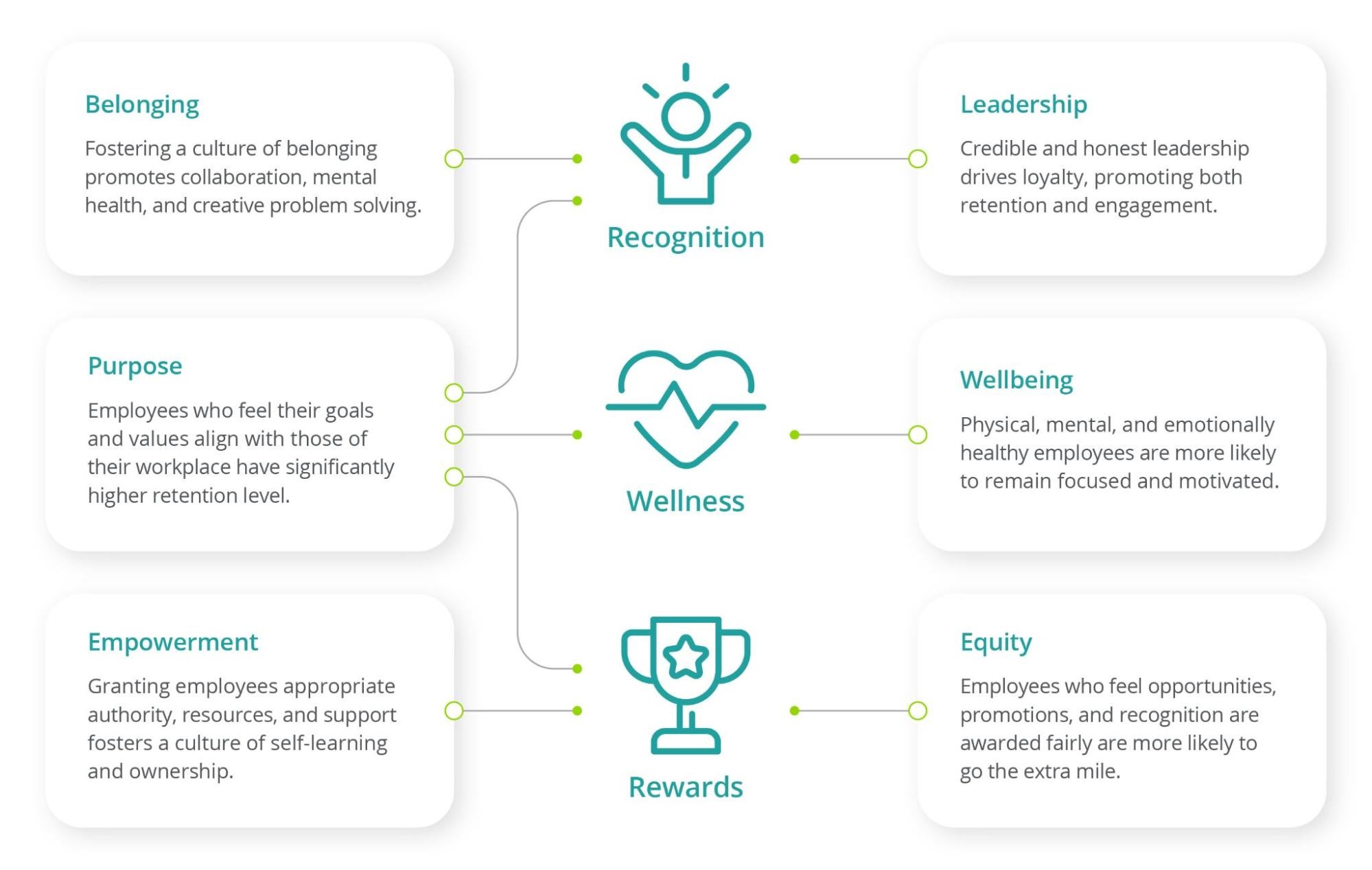
Measuring your workforce across these six indicators reveals what’s driving engagement—and where there are opportunities to improve. For example, leadership and purpose might score well overall, but specific departments or minority groups score low in belonging and equity.
Our baseline engagement survey, with 38 questions developed alongside I/O psychologists, assesses survey participants across all six indicators. If you’re using Terryberry’s employee listening tool, you’ll also find targeted surveys for each engagement factor plus dozens of scenario-specific surveys like exit and stay surveys.
5. Measuring Your Rewards Program’s Impact and ROI
Measuring your engagement program’s performance reveals whether it's meeting objectives like improving retention or transforming workplace culture. If you’re already using an engagement platform, you probably have the first set of data needed to measure impact: participation stats.
These reveal participation numbers, trends, and more granular insights, such as breakdowns of who gives and receives recognition most often. Pairing these insights with data from employee listening unlocks the full picture of your program’s impact.
Let’s consider the most straightforward example: eNPS. eNPS surveys reveal how likely specific employee cohorts are to churn or stay. So, combining recognition analytics with survey data lets you compare eNPS scores across cohorts. For example, what are the eNPS scores of your most recognized employees? Or, you could contrast the eNPS scores of teams under managers who recognize them frequently and those who don’t. These insights paint a picture of employee recognition’s impact on retention.
You don’t have to limit yourself to eNPS, though. Let’s add another layer of insights from engagement surveys. Now, layering these insights with participation and eNPS data reveals which cohorts are more likely to churn and why (e.g., they don’t feel a sense of belonging).
Understanding the why means you can launch tailored programs and initiatives to address these gaps.
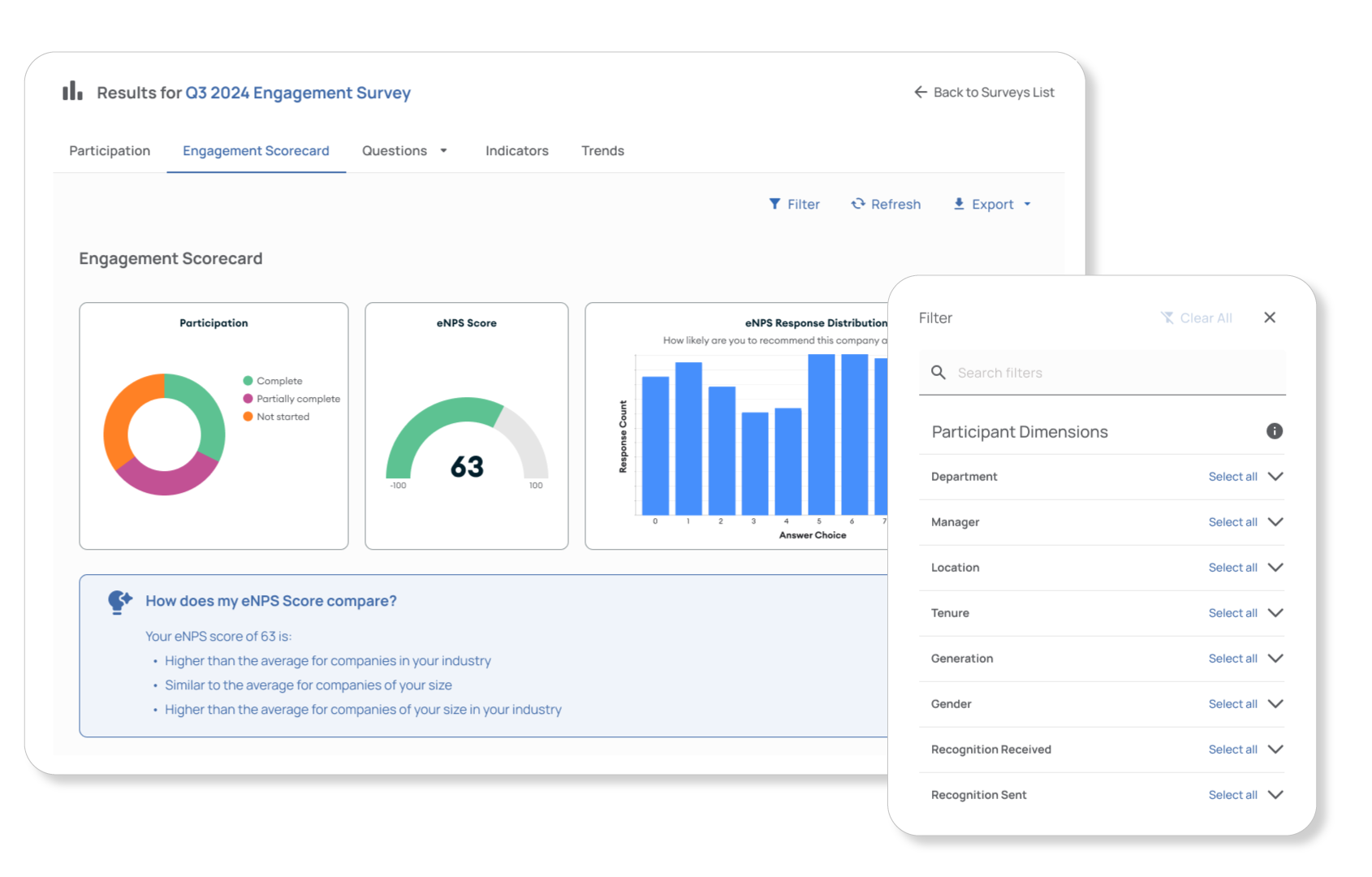
Some organizations spot surprising trends: their most recognized employees sometimes score lower in eNPS or specific engagement indicators like purpose than before.
This often comes down to shifting responsibilities. A passionate employee gets promoted but ends up doing work they care less about, which drags down motivation and fuels burnout.
Analytics show the dip, but it’s on leaders to dig deeper—run surveys or talk to teams to uncover the root causes and figure out how to address them. That’s why it’s important to consistently measure participation stats, engagement scores, and eNPS, and refine your approach over time. Sometimes, taking action means launching smaller, targeted programs to support specific cohorts.
Combine Rewards & Engagement with Terryberry’s Configurable Employee Engagement Platform
Over 40,000 companies use Terryberry to launch tailored employee listening, rewards and recognition, and wellness programs.
Terryberry’s employee engagement platform offers:
Meaningful Rewards Experiences
Terryberry’s integration with Amazon Business gives your team access to thousands of exciting reward options—from electronics to luxury goods—with a Prime-like delivery experience.
We can also create a custom rewards catalog tailored to your needs and budget. Plus, with our expertise in custom awards manufacturing, you’ll have access to personalized items for anniversaries, milestones, and other special occasions.
Tailored Employee Engagement Programs
Our team specializes in helping companies design, launch, and scale tailored engagement programs that drive strategic objectives. We’ll configure Terryberry’s engagement platform to precisely reflect your program, whether your goal is to instill core values or encourage peers to recognize each other.
Unified Analytics with Granular Insights
Terryberry is the only employee engagement platform that connects recognition, listening, and wellness. Uncover what’s working, spot what’s not, and see how each area impacts the others. Get a clear view of the factors affecting specific groups—and launch targeted programs that move the needle.
Schedule a demo today to launch and scale ROI-driven rewards programs.
